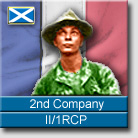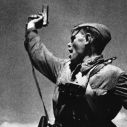bcgames
Posts: 2527
Joined: 6/2/2010
From: Bramble Rose Farm, KS
Status: offline

|
That's a good question. Let me see if I can break it down in one post.
First, you need to learn how to operate a capable image editing program like GIMP or Paint.net.
GIMP
https://www.gimp.org/
Paint.net:
https://www.getpaint.net/index.html
Both of these programs are free and have a ton of support on YouTube. I use a decades-old version of PhotoShop. Though very powerful, I don't recommend it for the part-time user; it has a rather expensive subscription program...way too much for me. If I didn't have PhotoShop, I'd probably use GIMP.
Second, learn how to use Layers within your photo-editing program. These allow you to break up the pieces that make-up a nice user-created scenario map. Top Layer...the Desert War hex grid. Bottom layer...the exported tile map from Desert War (do this using the editor). The in-between layers?...hex based artwork for clear, woods, rough terrain, etc....a layer for each terrain type in your scenario. The contents in the Layer sandwich--between the Top and Bottom layers--is where the artwork begins...
Third, use the Top Layer to select individual hexes for a particular terrain type from the Bottom Layer using the selection tools of your photo-editing program...then use terrain textures to fill in your selections.
Fourth, use the eraser tool, the blending tool, the duplication tool, the feathering tool, etc., to get your various terrain Layers blended together in a "GoogleEarth-like" appearance--GOVERNED BY--an understanding that each hex must easily convey similar-looking terrain information to The Player.
Fifth, when done, substitute the image-based map for the tile-based map. There's a tool in the editor to import the image-based map.
Bottom-line: Going from Tile-based to Image-based maps requires a photo-editing program and the skills to use it.
_____________________________
|
 Printable Version
Printable Version














 New Messages
New Messages No New Messages
No New Messages Hot Topic w/ New Messages
Hot Topic w/ New Messages Hot Topic w/o New Messages
Hot Topic w/o New Messages Locked w/ New Messages
Locked w/ New Messages Locked w/o New Messages
Locked w/o New Messages Post New Thread
Post New Thread